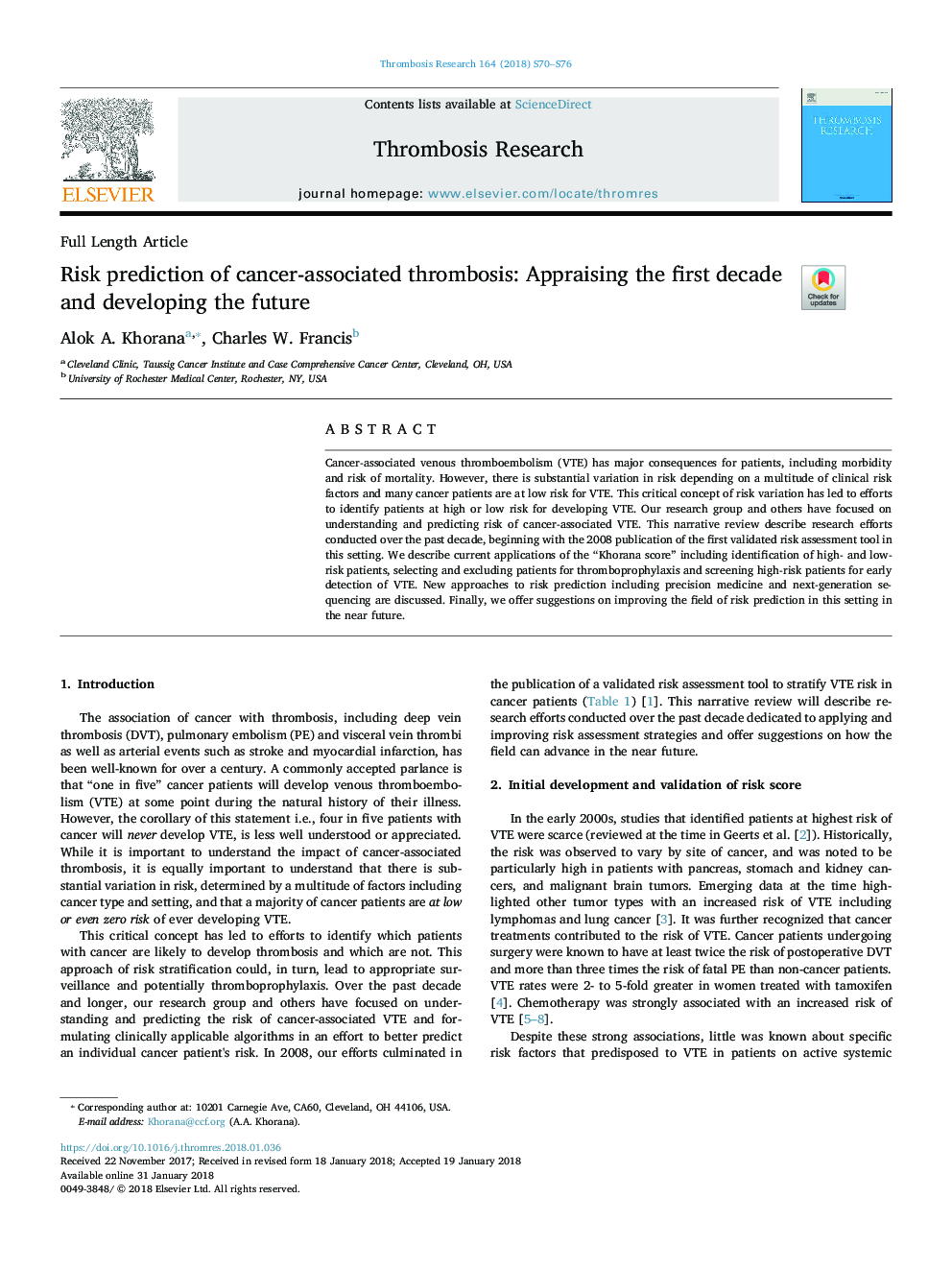| Article ID | Journal | Published Year | Pages | File Type |
|---|---|---|---|---|
| 8679474 | Thrombosis Research | 2018 | 7 Pages |
Abstract
Cancer-associated venous thromboembolism (VTE) has major consequences for patients, including morbidity and risk of mortality. However, there is substantial variation in risk depending on a multitude of clinical risk factors and many cancer patients are at low risk for VTE. This critical concept of risk variation has led to efforts to identify patients at high or low risk for developing VTE. Our research group and others have focused on understanding and predicting risk of cancer-associated VTE. This narrative review describe research efforts conducted over the past decade, beginning with the 2008 publication of the first validated risk assessment tool in this setting. We describe current applications of the “Khorana score” including identification of high- and low-risk patients, selecting and excluding patients for thromboprophylaxis and screening high-risk patients for early detection of VTE. New approaches to risk prediction including precision medicine and next-generation sequencing are discussed. Finally, we offer suggestions on improving the field of risk prediction in this setting in the near future.
Related Topics
Health Sciences
Medicine and Dentistry
Cardiology and Cardiovascular Medicine
Authors
Alok A. Khorana, Charles W. Francis,
